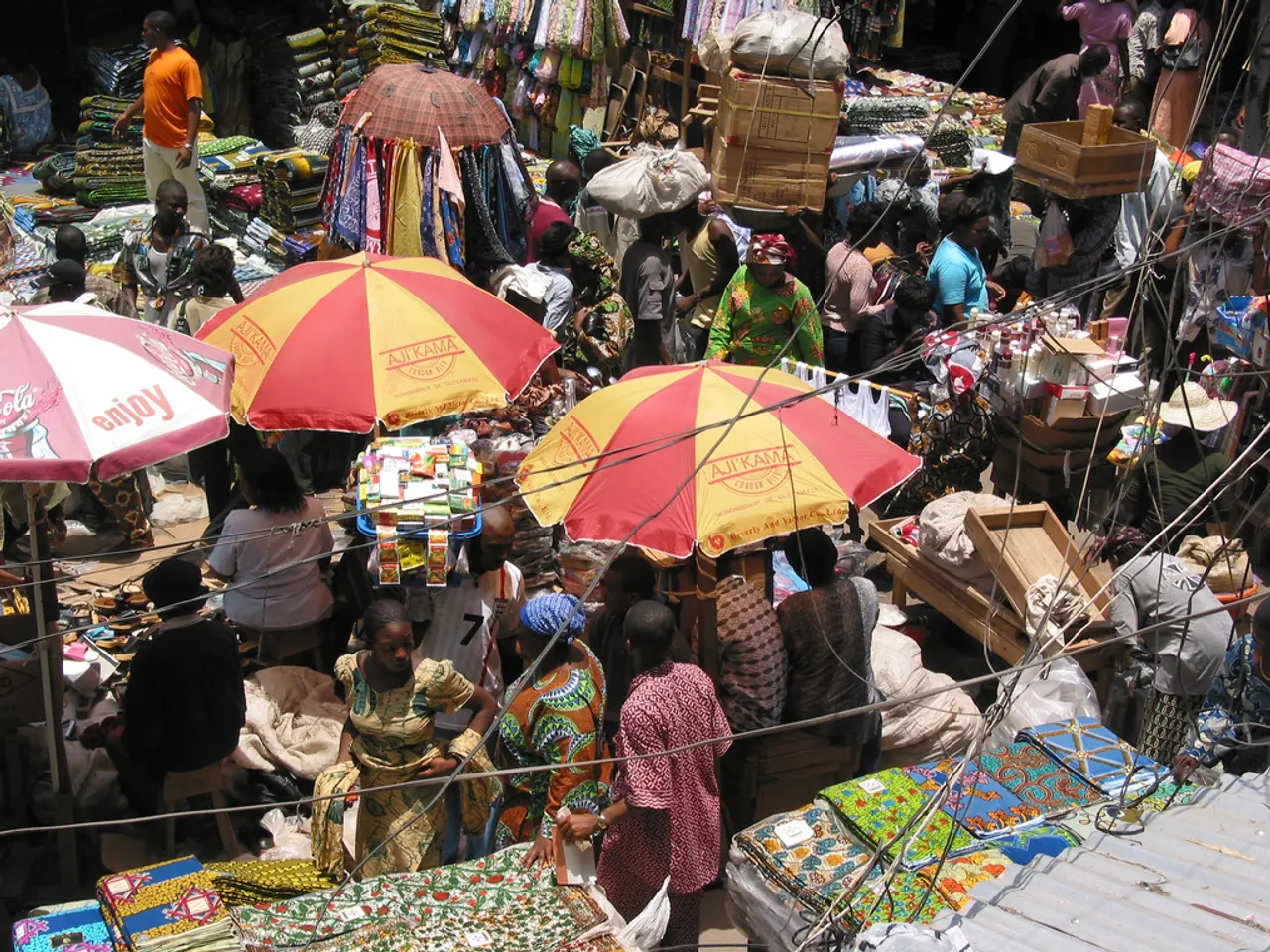Persisting flux in Chinese tourist inflow affects high-end European retail stores' adjustments
In a transitional phase, the European luxury retail sector is grappling with a cautious recovery in Chinese tourist spending, which remains flat with optimistic projections for the second half of 2025. This recovery, following a low base in the second half of 2024, is not yet confirmed for a full rebound [1].
Before the pandemic, Chinese tourists were the biggest spenders on luxury goods in Europe, accounting for two-thirds of the luxury sales. However, it is unlikely that they will regain their pre-Covid levels on European high streets [2]. The falling euro against the dollar continues to encourage visiting Americans to spend more, offering a glimmer of hope for the sector.
The recovery of Chinese tourist luxury spending has had a mixed impact on the European luxury retail industry. While luxury retail markets in major hubs such as Hong Kong and Shanghai face softer consumer spending and price sensitivity, key luxury flagship stores have still managed stable or slightly declining revenues, supported by events and international tourists from other regions [3].
This polarization means that leading European luxury brands that adapt quickly by refining portfolios and marketing tend to fare better, while others lag behind [1]. The strength of the US market will be in focus for any possible signs of weakness in the luxury industry.
Industry analysts now forecast that Chinese tourism spending will return to pre-Covid levels by 2025. However, the situation remains fluid and necessitates strategic recalibration by luxury players.
The scarcity of Chinese tourists has forced retailers to redesign their strategies to cater to locals rather than foreign tourists [4]. The US has overtaken Europe as the largest luxury market, attracting new store investment from European brands.
Chinese tourists were among the biggest spenders on luxury goods worldwide, accounting for one-third or €93 billion of global sales in the 10 years before Covid [5]. Despite the current challenges, the luxury industry remains optimistic about the potential for growth as the recovery unfolds.
Sources:
[1] Financial Times, 2025 [2] Bloomberg, 2025 [3] McKinsey & Company, 2025 [4] The New York Times, 2025 [5] Business of Fashion, 2025
- European luxury retailers are adjusting their strategies to cater to local consumers due to the scarcity of Chinese tourists.
- Chinese tourism spending is forecasted to return to pre-Covid levels by 2025, yet the situation remains fluid and requires strategic recalibration by luxury brands.
- The luxury industry remains optimistic about growth potential as the recovery unfolds, despite the challenges faced during the pandemic.
- In the wake of the pandemic, the US has overtaken Europe as the largest luxury market, attracting new store investment from European brands.





